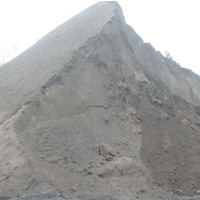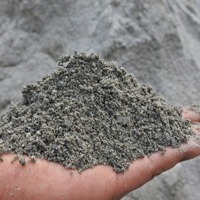M Sand is nothing but artificial sand made from crushing of rock or granite for construction purposes in cement or concrete. M sand differs from natural river sand in its physical and mineralogical properties.
Why Manufactured Sand?
Nowadays, sources of natural sand such as river sand, pit sand, stream sand, sea sand and other sands for use as an aggregate in construction are becoming scarce and exhausted due to environmental degradation. The driving need for alternative aggregates in construction has given the source to M Sand.
Another cause for the use of M sand is its active availability, reducing transport distances and minimising pollution.
M Sand is a better substitute to river sand as it is produced by machines in proper proportion with particle size.

Properties of Manufactured Sand
Greater Durability: The physical and chemical properties in M Sand are balanced and can withstand any harsh climatic conditions. It has the ability to overcome the defects in concrete like segregation, honeycombing, corrosion of reinforcement steel, voids, capillary, bleeding etc.
Higher Strength: M Sand has smooth surface texture and free from elongated and flaky particles as it is shaped by using VSI shaping machine. The cubicle shaped particles provide greater durability, higher strength and long life to the concrete.
Greater Workability: The cubical shape and proper gradation (particle should be from 150 microns to 4.75 mm in proper proportion) give good flexibility to mortar producing excellent workability.
Reduce Construction Defects: Use of M sand in concrete reduces voids, bleeding, segregation, etc. as it has optimal initial and final setting time with excellent fineness properties.

Economy: As the M Sand does not contain impurities like river sand, the amount of wastage is nil. The transportation cost also becomes less as it is readily available. Overall, M Sand is 30% cheaper than the river sand.
Eco-friendly: Use of M Sand in replacing with river sand avoids environmental disasters like groundwater depletion, water scarcity, a threat to natural life etc. Growing concern for environmental protection, M Sand is the best alternative to the river sand.
Advantages of Manufactured Sand
- M Sand has higher Fineness Modules Index compared to the natural river sand, which gives good workability for concrete.
- M sand is free from silt and clay particles which offer better abrasion resistance, higher unit weight and lower permeability.
- Less disruptive to the environment, as it reduces sand mining from river beds.
- Perfect grading and cubical shape of M Sand gives high strength and great durability to concrete.
- More cost-effective than river sand due to low transportation cost and consistency in availability.
Disadvantages of Manufactured Sand
- Due to its smooth and angular textures, leads to more water and cement requirement to achieve the expected workability, thereby increase in overall costs.
- If the M Sand contains a large number of micro fine particles, it can affect the strength and workability of concrete.
Conclusion
Contemplating the present scenario, such as a shortage of river sand, huge slip in the quality of river sand, high costs, environmental effects, We should start using Manufactured Sand as an alternative to the river sand in the construction process, thereby reduces the impacts on the environment.
Check Out: Importance of Sand in Construction
Technically Reviewed by Rajesh Pagadala, MS, Founder & CEO - BuildersMart. Written by Vani paspula, Content Manager.
















nandhicrusher
posted on Aug 25, 2021 10:46:01 AM